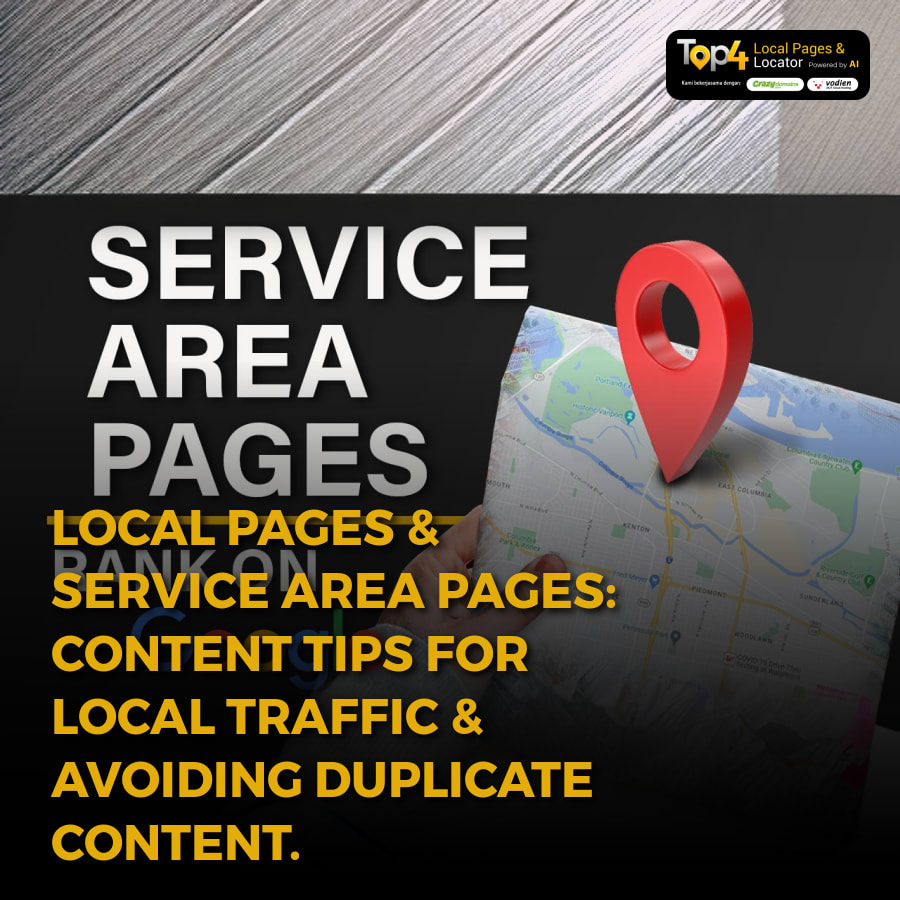Imagine you're a local business owner, and despite having a beautiful website, you're struggling to see any meaningful traffic or leads. Why is that? Often, the secret to online success lies in how you target your local audience. Enter service area pages. These are the unsung heroes that can propel your local business onto the first page of Google's search results, bringing in highly targeted local traffic and quality leads.
Local pages, specifically service area pages, act as landing spots for search engines looking for geographically relevant content. They cater specifically to users searching for services in a defined location. By having well-crafted local pages, businesses can enhance their online visibility for geographically-specific queries. So, what is the function of service area pages, and how do they work? Essentially, they optimise your website to appear in location-based searches.
When someone in your area searches for a service you offer, your local pages serve as beacons, guiding them to your website. These pages should clearly outline the services offered in each area you target. By doing so, you connect with potential customers who may not have found you otherwise. This is vital for capturing local traffic that is likely to convert into leads and sales.
How Service Area Pages Drive Traffic and Leads
Service area pages are not just about listing your service locations; they are crucial for driving traffic and leads in several ways. First, they help your site rank higher in local searches. Google uses location-based algorithms to sort search results, and well-optimised service area pages align your business with these algorithms, increasing visibility.
Moreover, these pages can significantly impact user engagement and conversion rates. Visitors arriving on service area pages are already interested in services within their locality. When they land on a page that speaks directly to their needs and location, they're more likely to take action, whether that's making a purchase, filling out a form, or contacting your business.
Content Tips for Effective Service Area Pages
Creating effective service area pages requires more than just listing your services and locations. Strategic content planning is essential to avoid duplicate content and to offer genuine value to your visitors. Here are some content tips to get you started:
- Unique Descriptions: Ensure each service area page has a unique description tailored to the locality. Highlight what sets your services apart in that specific area.
- Customer Testimonials: Include reviews or testimonials from customers in that area to add credibility and build trust.
- Local Landmarks: Mention well-known local landmarks or events to make the content relatable.
- Multimedia Elements: Use images and videos relevant to the local area to enhance user engagement and SEO.
These tips not only help in making your pages more engaging but also drive quality traffic, enhancing the chances of converting leads.
Avoiding Duplicate Content
Duplicate content can be a significant issue when creating multiple service area pages. Google views duplicate content unfavourably, as it can dilute the relevance of your site. To avoid this pitfall:
- Unique Copy: Ensure that your content is unique for each service area page. Even small changes can make a big difference.
- Canonical Tags: Use canonical tags to indicate the primary version of content if you must duplicate some information.
- Localised Information: Customise content based on local trends, news, and market conditions to keep it relevant and unique.
By carefully managing your content, you can avoid penalties from search engines and maintain a positive online reputation.
Conclusion
In summary, service area pages play a pivotal role in driving local traffic and generating leads. They help your website to rank higher in local searches, engage users with relevant content, and convert visitors into customers. With strategic content planning and careful management to avoid duplicate content, service area pages can significantly enhance your local SEO efforts.




























